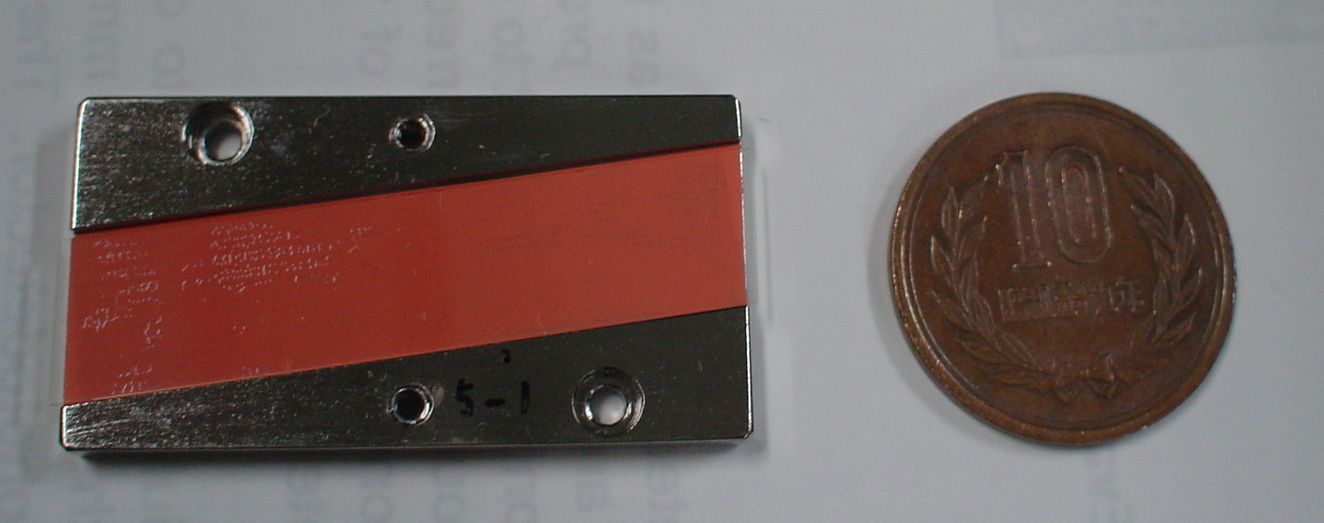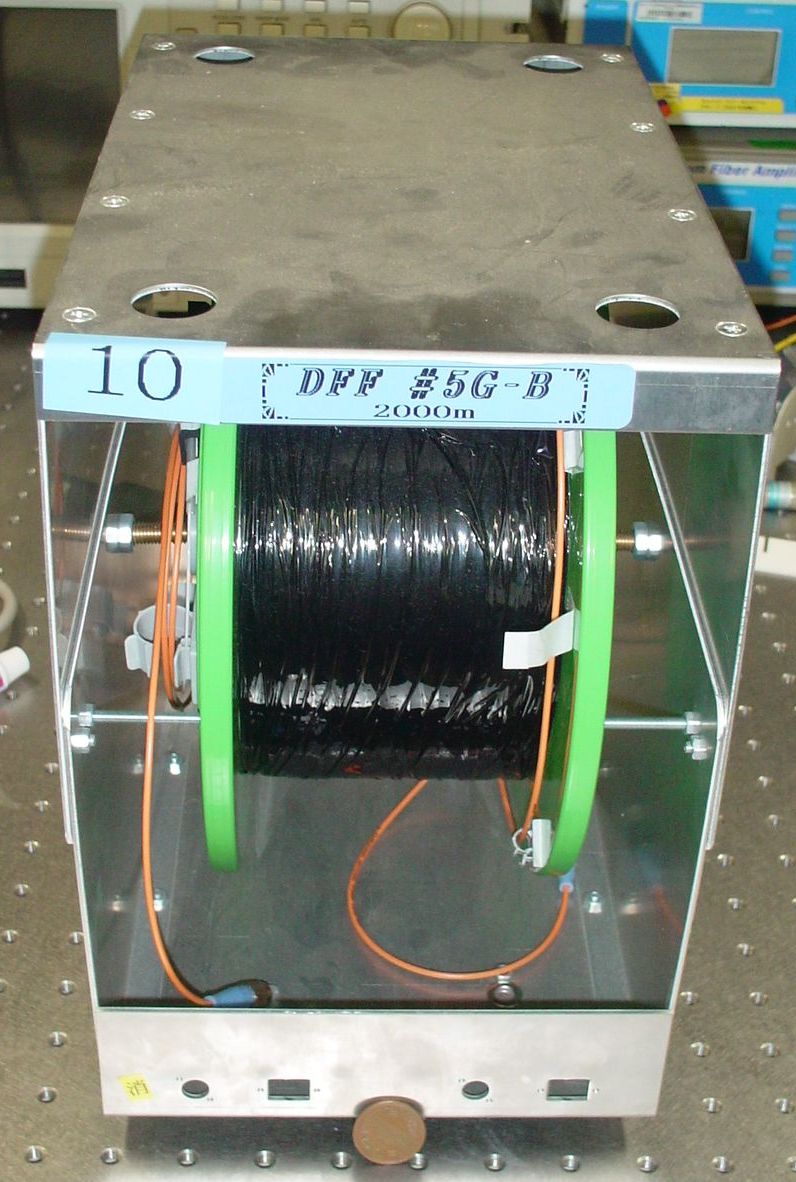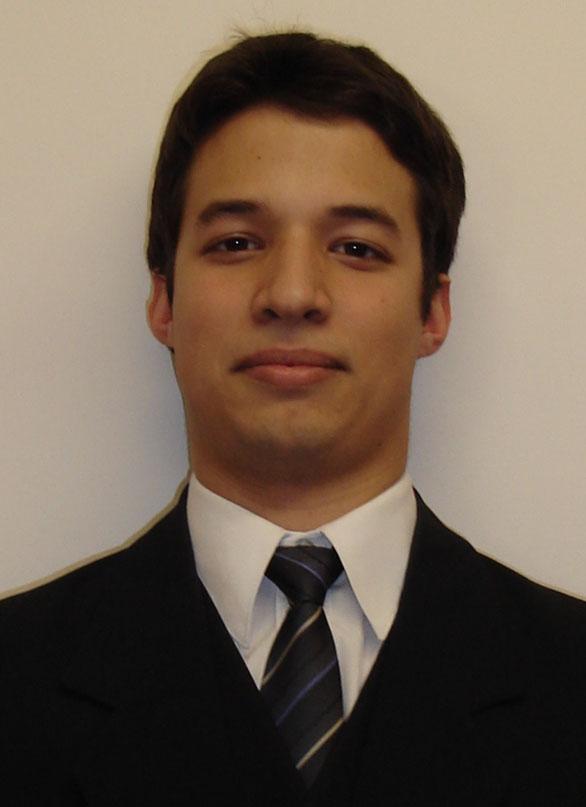 |
BMe Research Grant |

|
Doctoral School of Electrical & Electronic Engineering
Department of Telecommunications and Media Informatics
Supervisor: Dr. Tibor Cinkler
Study of Optical Phase Regenerators
Introducing the research area
Fiber-optic systems play a major role in modern telecommunication. With the evolution of technology, transmitting data by light phase modulation instead of simple on-off keying has become possible. As this method gives much better results in terms of transmission speed and quality, it is quickly spreading throughout the industry. To deploy and operate large (metropolitan, national, international) networks, regenerators (signal repeaters) operating at tens of terabits per second should be included. Unfortunately, they are large and consume high power. The aim of my research is to find an all-optical way of regenerating signal phase that enables developing power and space saving phase regenerators that are potentially simpler and cheaper than the current ones.
Brief introduction of the research place
I conduct my research work as a PhD student at the Department of Telecommunications and Media Informatics (TMIT) and also as member of the High Speed Network Laboratory (HSNLab). Currently, I am participating on an exchange program at the National Institute of Information and Communications Technology (NICT) in Tokyo, Japan as part of a cooperation program with TMIT. This gives me the opportunity to study the most recent advances in my field and work in one of the world's leading fiber-optic laboratories.
History and context of the research
I started working in the field of fiber-optics as a second year student (single level system) in 2005. In 2006, I entered a scientific competition (TDK) with my work on nonlinear optical phenomena which was awarded first prize at both university and national levels. In the next years I reached similar results (see references). Having gained experience in nonlinear optics, I chose intensity regenerators as the topic for my graduation, and then started focusing on phase regenerators. With the onset of novel modulation formats, we are wittnessing importance of this functionality rapidly growing, however, its research is still at an initial stage. As for now, the most promising candidates for this purpose are phase sensitive amplifiers; the first real regenerative setup operating on this principle was introduced as late as this spring (2010) [11]. Its design is based on a highly nonlinear optical fiber, which inherently has large size and low integrate ability. Now my goal is to realize the same functionality in PPLN (Periodically Poled Lithium Niobate), a special nonlinear crystal that allows smaller size, better integrate ability and stability than that of the nonlinear fibers. Until recently, the physics of PPLN-based phase sensitive amplifiers is hardly present in scientific publications.

Dimensions of a PPLN compared to a coin: 50 parallel waveguides are integrated on
the same chip (red)

Dimensions of a nonlinear optical fiber; the same coin from the previous picture is shown at
the bottom for comparison
In addition to the device level research, I am developing a computer model
for assisting in the arrangement, optimization and better understanding the accumulating effects of phase regenerators. Currently I am working on a
simplified general model, and plan to validate it through device level models and experimental
results.
Aim of the research
My research work covers two separate areas. In my device level studies, the main question is whether an efficient phase regenerator can be built with PPLNs and what advantages it has over the conventional, fiber-based amplifiers. Based on published theories, the operation is presumable feasible and efficient but no real regeneration experiments have been reported so far. Current optical systems use up to one hundred parallel wavelength channels for transmission. These must be separated before the electronic processing, however, a phase sensitive amplifier can handle all of them simultaneously, which results in a great advantage in terms of price and complexity.
The second research area includes determination of efficiency that is expected from
regenerators, their proper locations to be installed to and other parameters that affect network
performance as function of the system configuration. No papers have been
published in this area up until now. My first results showed that even phenomena that are usually neglected can play an important role in these complex processes
[9].
Methods
At NICT's laboratory, I have the opportunity to examine phase regenerators
experimentally. For this purpose I started reproducing a published basic setup and transform
it step-by-step. The key point is replacing the nonlinear fiber for PPLNs. This
enables a simple and smaller setup (differences visualized in the two
above photos). As a consequence, (mainly temperature related component of) system stability is
expected to increase, too. To improve efficiency of measurements, I have also developed additional
custom electronics.
In the meantime, I am implementing a simulator in Matlab based on differential equations driving optical propagation to avoid possible errors in commercially available simulator software. Although models for phase sensitive amplifiers could be used in network level simulations as well, now they are considered more of an additional support for the experiments and a bridge between the simplified model and experiments. As these physical models have relatively high runtime and excess accuracy, I am not planning to use them in network simulations.
Results
Experimental results: The first measurements showed a phase sensitive gain one order of magnitude
higher (15 dB) than the best published (to our best knowledge). A paper in this topic is already being prepared. For a real regenerative operation, we
need to subtract the exact carrier wavelength from the signal, which we
successfully performed with a PPLN.
Simulation results: I have investigated noise accumulation in multi-regenerator transmission lines. Placing phase and intensity regenerators of various efficiency along the fiber, signal quality was investigated. A new phenomenon was also recognized and documented: signal quality can often largely increase when applying minimal intensity regeneration to the system together with the straightforward phase regeneration. The phenomenon is largely dependent on the dispersion of the fiber. I studied this relationship in detail [9].
Expected impact and further research
In my research, I study all-optical regenerators for restoring signal
quality which, in my opinion, will be a key component of future optical networks. In
addition to their basic functionality, I also focus on practical issues like
size and price. To get a full picture of the problem, I extended my
experiments with network and device level simulations. My long term goal is the
experimental realization of a multi-wavelength PPLN-based regenerator and the development of a
general simulation model. Below you can find my publications on regeneration and nonlinear optics.
Publications, references, links
-
Mazroa Dániel: Optimális jelszint meghatározása optikai szálakban (Determining the Optimal Signal Level in Optical Fibers, in Hungarian), TDK scientific competition essay, BME-VIK 2006, I. prize, OTDK 2007 I. prize
-
Mazroa Dániel: 10 Gb/s-os DWDM hálózatok optimalizálása az optikai szálban fellépő nemlineáris hatások függvényében (Optimization of 10 Gbps DWDM Networks as a Function of Non-linear Effects in the Optical Fiber, in Hungarian), TDK scientific competition essay, BME-VIK 2007, II. prize
-
Mazroa Dániel: Nagysebességű adatátvitel megvalósíthatósági vizsgálata multimódusú optikai szálak alkalmazásával (Feasibility Testing of High-Speed Data Transfer by Multi-Mode Optical Fibers, in Hungarian), TDK scientific competition essay, BME-VIK 2007, I. prize, OTDK 2009, III. prize
-
Mazroa Dániel, Zsigmond Szilárd: Maximális optikai jelszint meghatározása DWDM rendszerekben (Determining the Maximum Optical Signal Level in DWDM Systems, in Hungarian), Híradástechnika, June, 2007, pp. 26–33.
-
Mazroa Dániel, Zsigmond Szilárd, Cinkler Tibor: Determining the Maximum Power Level in Optical Fibers, BONE Summer School, 2008
-
Mazroa Dániel: Félvezető optikai erősítőkkel megvalósított optikai regenerátorok szimulációja és mérése (Simulation and Measurement of Optical Regenerators Implemented with Semiconductor Optical Amplifiers, in Hungarian), TDK scientific competition essay, BME-VIK 2008, II. prize
-
Dániel Mazroa, Szilárd Zsigmond, Tibor Cinkler: Determining the Maximum Signal Power in 10 Gb/s WDM Optical Networks, Photonic Network Communications, Aug. 2008
-
Mazroa Dániel: Optikai regenerátorok szimulációja és mérése (Simulation and Measurement of Optical Regenerators, in Hungarian), BME-HTE conference for graduates, 2009, best presentation award
-
Dániel Mazroa, Satoshi Shinada, Hideaki Furukawa, Szilárd Zsigmond, Tibor Cinkler, Naoya Wada: Amplitude vs Phase Regeneration for BPSK Modulation Format, IEICE, Technical Meeting on Photonic Networks, Akita, June, 2010 (accepted)
-
Szilárd Zsigmond, Dániel Mazroa, Hideaki Furukawa, Naoya Wada: Limitation of Spectral Efficient Modulation Formats for Circuit and Packet Switched Networks, OECC, Sapporo, July, 2010 (accepted)
-
Francesca Parmigiani, Radan Slavic, Joseph Kakande, Carl Lundström, Martin Sjödin, Peter Andrekson, Ruwan Weerasuriya, Stylianos Sygletos, Andrew D. Ellis, Lars Grüner‐Nielsen, D. Jakobsen, S. Herstrøm, Richard Phelan, James O’Gorman,
Adonis Bogris, Dimitris Syvridis, Sonali Dasgupta, Periklis Petropoulos, David J. Richardson: All‐Optical Phase Regeneration of 40Gbit/s DPSK Signals in a Black‐Box Phase Sensitive Amplifier, OFC, San Diego, March, 2010
